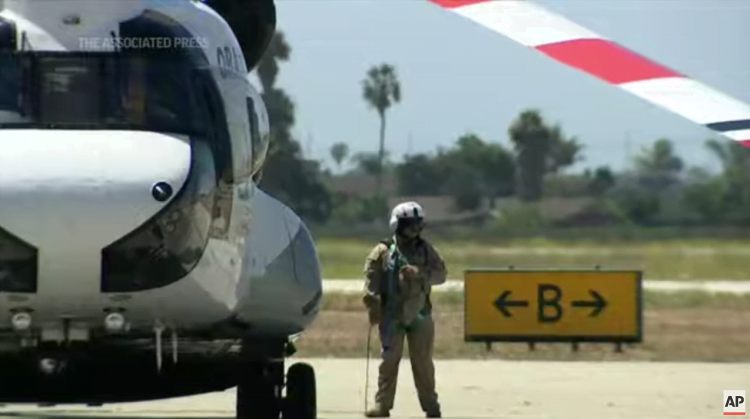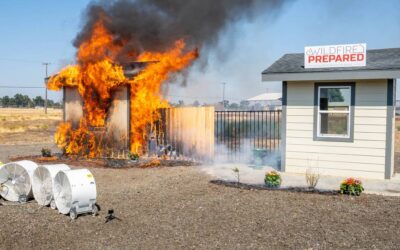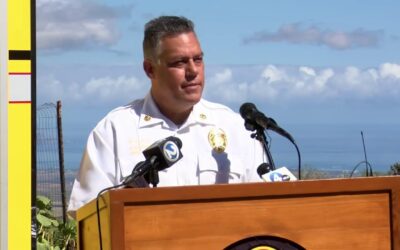Boeing Chinook helitankers already at work over Ventura County

Southern California fire agencies are getting two large-scale helicopters that can each carry up to 3,000 gallons of water or retardant to battle wildfires. The helicopters will operate in Los Angeles, Ventura and Orange Counties. (Associated Press)
By AMY TAXIN Associated Press
LOS ALAMITOS, Calif. (AP) — Southern California fire agencies are getting two large-scale helicopters that can each carry up to 3,000 gallons (11.356 liters) of water or retardant to try to limit the spread of wildfires — and just as hot dry weather is setting in.
Fire agencies in Los Angeles, Orange and Ventura counties, which are home to a combined 14 million people, said they are entering a partnership starting Tuesday that will help deploy critical air resources quickly to wildfires, including the two large-scale Boeing Chinook helitankers known as CH-47s, a helitanker that can carry up to 1,000 gallons (3,785 liters), a coordinating helicopter and a mobile retardant base.
However, the tankers were pressed into service early Monday to handle a fire in Ventura County. By evening, firefighters were making good progress on stopping the blaze from spreading and no buildings had burned, fire officials said.
The tri-county effort, dubbed the quick reaction force program, will be in place for up to six months and funded with up to $18 million from regional electric utility Southern California Edison. It comes as much of the region is bracing for an early season heat wave and red flag warnings signaling the potential for wildfires.
“The fact that we’re bringing these copters is a plus, a significant plus,” Los Angeles County Fire Chief Daryl Osby told reporters at a demonstration of the helicopters at the Joint Forces Training Base in Los Alamitos, California.
The agencies said the CH-47s will be able to drop fire retardant through the night, something they haven’t done before, and that could significantly help firefighters limit the spread of these blazes.
Fire officials throughout the region are concerned by the tinder-dry weather conditions and a decline in the number of hand crews who work on the ground to contain wildfires. Osby, for one, said he has 10 hand crews ready for the upcoming fire season compared with 28 of these crews about five years ago.
The use of these large-scale helicopters is also an advantage, Osby said, adding his agency until now has been counting on helicopters capable of carrying 350 gallons (1,325 liters) or 1,000 gallons of water at a time.
Orange County had use of a CH-47 last year. It was equipped to drop water overnight, but not retardant, which is used around the edges of a fire to try to limit its spread, Orange County Fire Chief Brian Fennessy said. He said he was looking forward to having this capability at night when winds tend to die down and temperatures fall.
In California, fire conditions have worsened in recent years. Last year’s record-setting wildfire season scorched more than 4% of the state while killing 33 people and destroying nearly 10,500 buildings.
Numerous studies have linked bigger wildfires in America to climate change from the burning of coal, oil and gas. Scientists have said climate change has made California drier, meaning trees and other plants are more flammable.
This week, much of the state faces an early season heat wave as high pressure over the Southwest expands westward. Red flag warnings will be in effect through Wednesday morning along the south Santa Barbara County coast. Critical fire weather conditions are also expected in southeastern California.
All contents © copyright 2021 The Associated Press. All rights reserved.




